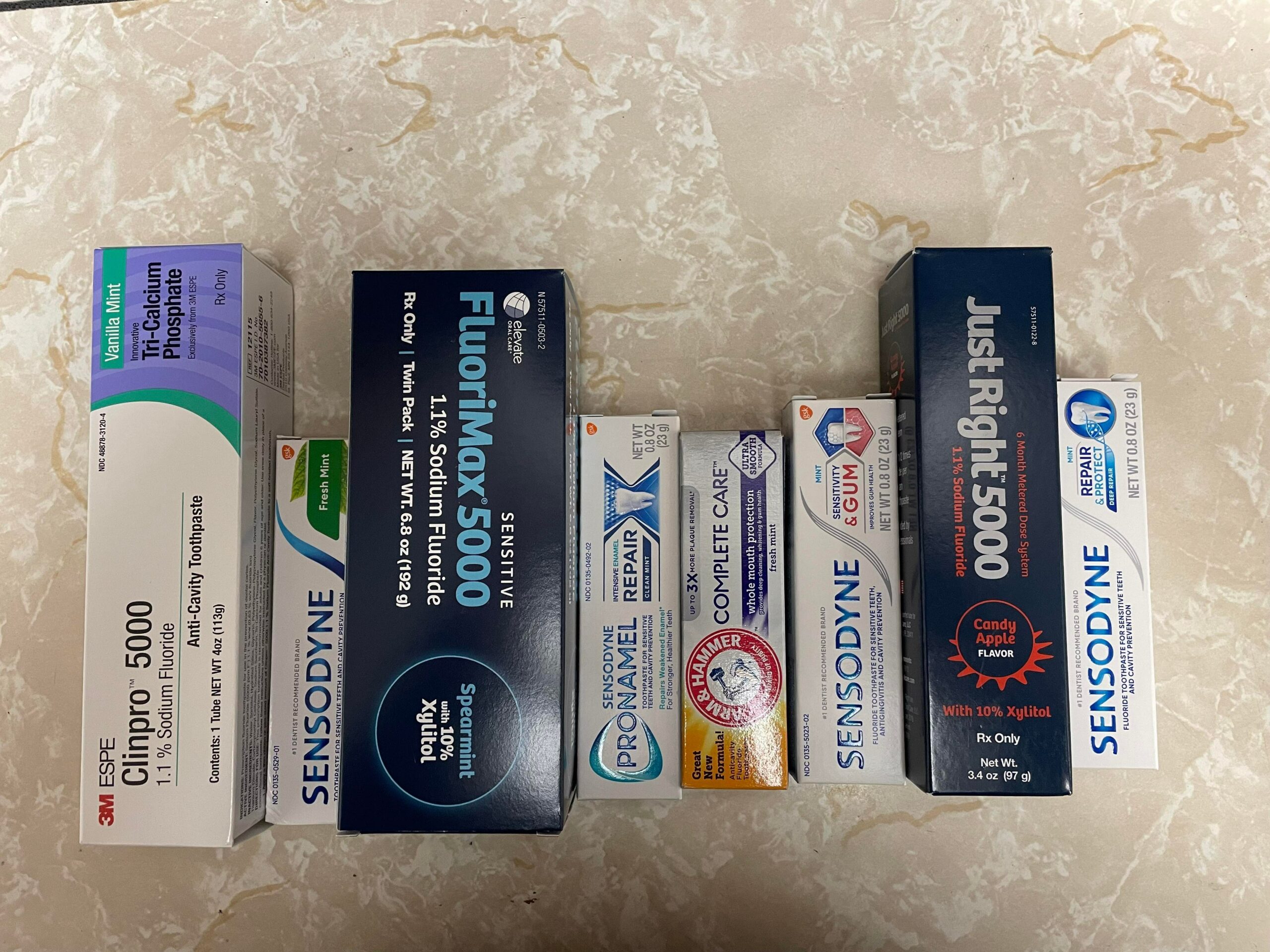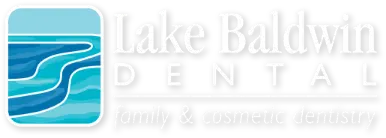After last week’s deep dive into how to brush your teeth, we figured it was a good time to dig into the nitty gritty on finding the best toothpaste so you know what to put on your brush to get those pearly whites as sparkling as possible!
Toothpaste Ingredients: Aren’t All Toothpaste Formulas the Same?
All toothpastes have a few basic elements in common. We want our toothpaste to spread evenly and make bubbles, so most of them have surfactants and detergents just like any other soap or shampoo.
Toothpaste shouldn’t dry out in the tube, so they usually include a humectant, which helps maintain moisture. We don’t want the ingredients to separate, so there’s usually a binder like sodium alginate (a naturally occurring, edible substance derived from algae).
And we want them to taste good, or at least tolerable, so there will generally be a flavoring agent, although plain toothpastes do exist!
What Toothpaste Is the Best Depends on What You Need!
Most toothpastes add cosmetic or therapeutic ingredients to this basic foundation. These are the ingredients that target specific goals or dental problems, and where the most variation between toothpaste formulas exists. In general, most toothpastes should help to prevent cavities, protect your teeth, and get a deeper clean when you brush.
Cavity Prevention
The main cavity-fighting ingredient in most toothpastes is fluoride. Fluoride is a safe, naturally-occurring mineral, and an essential nutrient. Applied as a mineral supplement twice daily when you brush your teeth, fluoride can help to reinforce the mineral of your teeth. As acids strip mineral from your teeth throughout the day, fluoride can help plug those holes with fresh mineral.
Not only does fluoride help prevent cavities, it can also prevent acid erosion and fight tooth sensitivity, too! Fluoride is a powerhouse ingredient that does tons of great work for your teeth.
Tooth Protection
Other ingredients can boost the protective and anti-sensitivity benefits of fluoride in your toothpaste. For example, xylitol, a naturally-occurring sugar, can neutralize acid in your mouth and help fight decay! (A sugar that fights cavities? Crazy, but true.) Xylitol shows up in many fluoride-free training toothpastes for children, as well as chewing gum and some anti-cavity mouthwash. Neutralizing acid can also protect against sensitivity!
Other anti-sensitivity additives can help calm the nerves in your teeth or cover the microscopic pores in your enamel that leave those tiny nerve endings exposed to changes in temperature and pH that can trigger painful sensitivity.
Finding the right type of enamel protection depends a lot on your specific needs, what type of sensitivity you have, the pH of your own saliva, and a variety of other factors. As always, when in doubt, talk to your dental team at Lake Baldwin Dental! We’re here to help!
Cleansing and Plaque Removal
When it comes down to it, your toothbrush does the heavy lifting for removing plaque from your teeth. With good brushing technique and a solid home care routine, even using your toothbrush without paste can do the job. However, toothpaste also includes ingredients that can enhance the cleansing action of your toothbrush.
Abrasive agents add scrubbing power to the bristles of your toothbrush, helping boost their cleaning power. However, you can have too much of a good thing when it comes to abrasives, which we’ll discuss next! In general, you’ll want to find a toothpaste with a relatively low abrasiveness. We like Sensodyne products for over-the-counter options, as their abrasiveness finds a great balance between being effective without being too harsh.
In addition to cleaning plaque off your teeth, your toothpaste should also help freshen your breath, right? Well… sort of. While minty flavoring and breath freshening additives in toothpaste can help control odor, better breath often has more to do with bacteria on your teeth and tongue, and malodor that comes from deeper in the lungs and stomach. Check out our complete guide to getting fresh breath!
Toothpaste Ingredients to Avoid
Not all toothpaste ingredients are equally great for your teeth. Those abrasives that help remove plaque are only good up to a point. Some toothpastes include abrasives that are too harsh and can abrade your gums and even wear on your enamel. Two major red flags on any toothpaste label are whitening and tartar control.
Many whitening toothpastes contain harsh abrasives that scrape stains off your teeth. Along with the stains, however, they can strip microns of enamel at a time, slowly wearing it away. They can also abrade your gums and create red, irritated tissue and may even exacerbate recession! Charcoal toothpaste, baking soda, and other home remedies and over-the-counter whitening pastes rarely work as promised. They may remove a little stain or brighten your smile slightly after prolonged use, but professional whitening will give you much better results without being hard on your teeth.
Likewise, tartar control ingredients may include harsh abrasive agents. Although it’s been eliminated from the majority of major toothpaste brands, tartar control toothpastes may also contain an antimicrobial called triclosan. In theory, it’s supposed to cut down on bacteria that lead to plaque and tartar and keep your teeth cleaner. However, research indicates that it may not be safe and certainly has limited, if any, effectiveness. Triclosan is a toothpaste ingredient we recommend avoiding!
What Toothpaste Is Best for Kids?
The American Academy of Pediatric Dentistry recommends using a fluoride toothpaste starting at the appearance of baby’s first tooth. In the past, the recommendation was to use a fluoride-free training toothpaste until your child could spit out the bubbles. However, decades of painstaking research has determined that a tiny smear (about the size of a grain of rice) of fluoride toothpaste gives babies the cavity-fighting benefits of a mineral supplement without creating any adverse effects.
However, if you’re still wary of staring fluoride until your child can spit dependably, you may opt for a training toothpaste instead. Ideally, look for one that contains xylitol to get some cavity-fighting benefit!
Your child may also be getting some fluoride from tap water but some counties in Florida no longer fluoridate their water supply. Check out your county on the Florida Department of Health website to be sure!
Ultimately, the choice of toothpaste for your child comes down to finding one they like to use! Building excellent home care habits in early childhood can help your kid enjoy a lifetime of great dental health. It may take some trial and error, but letting your child choose a flavor that works for them is well worth the effort.
We Can Help You Find the Perfect Toothpaste for You!
Helping you find the right tools to keep your smile healthy is a key part of our mission to give you great oral health for life. Whether you’re curious about how to get whiter teeth, healthier gums, or fresher breath, we can point you in the right direction! The right toothpaste might be just what you need. Keep smiling, Orlando!


